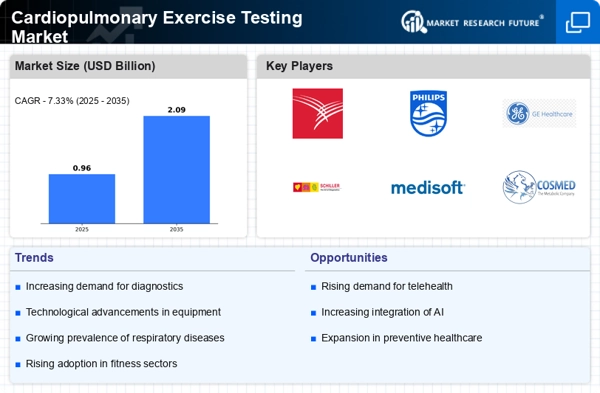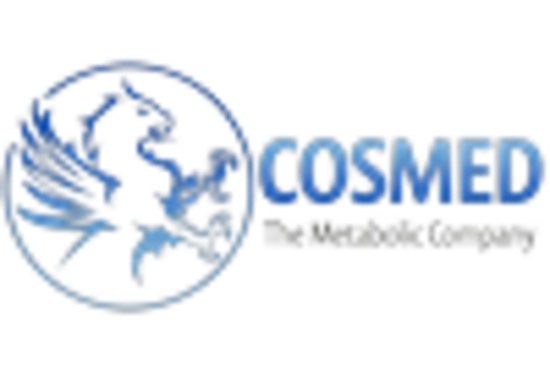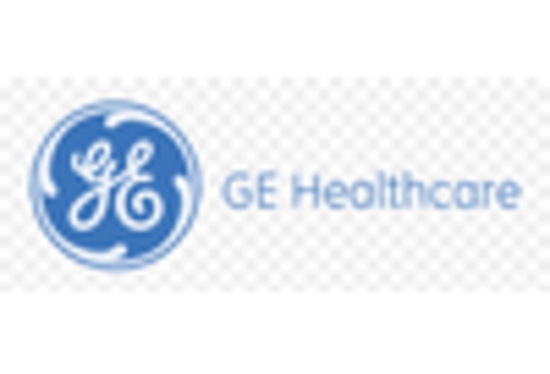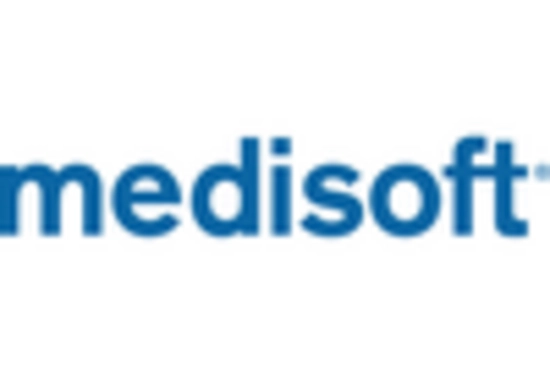Market Trends
Key Emerging Trends in the Cardiopulmonary Exercise Testing Market
The cardiopulmonary exercise testing (CPET) market is experiencing significant trends influenced by factors such as technological advancements, increasing prevalence of chronic diseases, and growing emphasis on personalized medicine. CPET is a diagnostic tool used to evaluate cardiopulmonary function and exercise capacity in patients with cardiovascular and respiratory conditions. One notable trend in this market is the growing adoption of CPET in clinical practice and research settings. As the importance of assessing cardiorespiratory fitness and functional capacity becomes increasingly recognized, there is a growing demand for CPET systems and services to aid in the diagnosis, prognosis, and management of various cardiopulmonary disorders.
Technological advancements play a pivotal role in shaping market trends in the CPET market. Innovations in CPET equipment, software, and data analysis algorithms enable more accurate and comprehensive assessment of cardiopulmonary function and exercise physiology. Advanced CPET systems offer integrated gas exchange analysis, electrocardiogram (ECG) monitoring, and spirometry measurements, providing clinicians with detailed insights into cardiovascular and respiratory performance during exercise. Moreover, the development of portable and wireless CPET devices enhances flexibility and accessibility, allowing for testing in various clinical and research settings, including outpatient clinics, rehabilitation centers, and field-based studies.
Furthermore, the increasing prevalence of chronic diseases such as cardiovascular disease, chronic obstructive pulmonary disease (COPD), and heart failure is driving market growth for CPET testing. These conditions are associated with impaired cardiopulmonary function and exercise intolerance, necessitating comprehensive assessment and monitoring of patients' functional capacity. CPET plays a critical role in risk stratification, treatment planning, and rehabilitation programs for individuals with cardiopulmonary disorders, contributing to better patient outcomes and quality of life. Moreover, the rising awareness of the importance of early detection and management of chronic diseases drives the demand for CPET as a diagnostic and prognostic tool in clinical practice.
Moreover, demographic shifts and changing lifestyle factors influence market trends in the CPET market. With aging populations and the increasing prevalence of sedentary lifestyles, obesity, and metabolic syndrome, there is a growing burden of cardiopulmonary diseases worldwide. Additionally, environmental factors such as air pollution, smoking, and occupational hazards contribute to respiratory health problems and cardiovascular risk, further driving the demand for CPET testing as part of comprehensive cardiovascular and pulmonary evaluations. Furthermore, the COVID-19 pandemic has highlighted the importance of assessing cardiopulmonary function and exercise capacity in patients recovering from acute respiratory illnesses, such as COVID-19 pneumonia, driving increased utilization of CPET in post-COVID rehabilitation programs.
Regulatory factors also play a significant role in shaping market trends in the CPET market. Regulatory agencies such as the FDA (Food and Drug Administration) and the European Medicines Agency (EMA) regulate the approval, manufacturing, and marketing of medical devices, including CPET systems and software. Compliance with regulatory standards and guidelines is essential for market entry and commercialization, ensuring product safety, efficacy, and quality. Moreover, reimbursement policies and insurance coverage for CPET testing vary across different regions and healthcare systems, influencing market access and pricing strategies for manufacturers and healthcare providers.









Leave a Comment